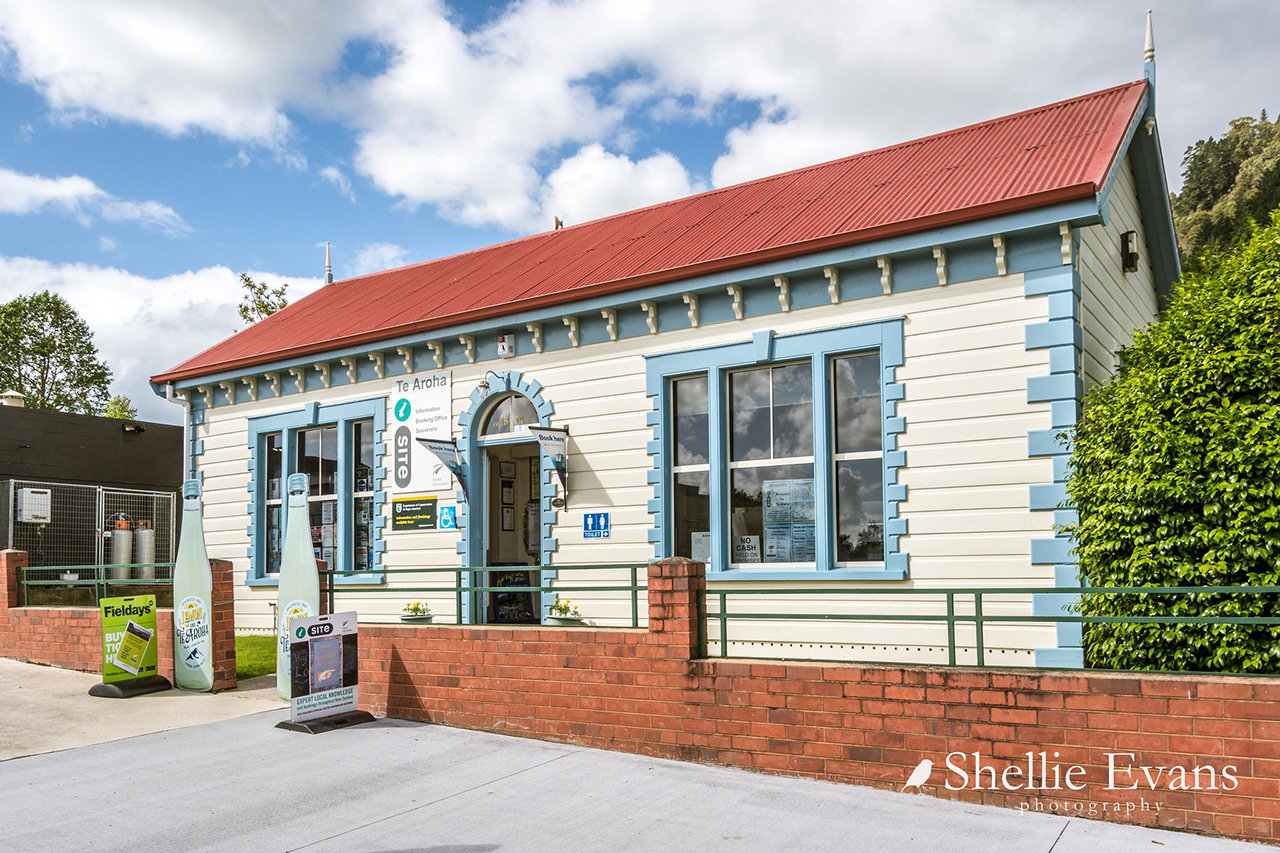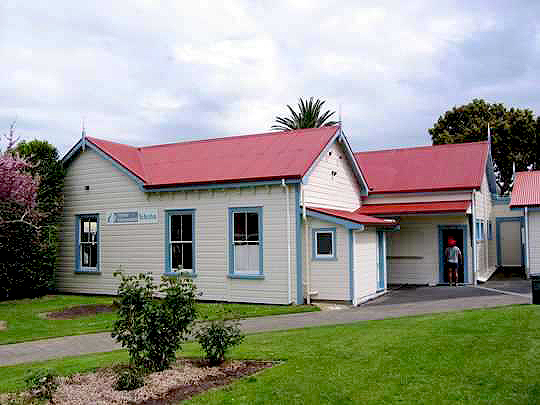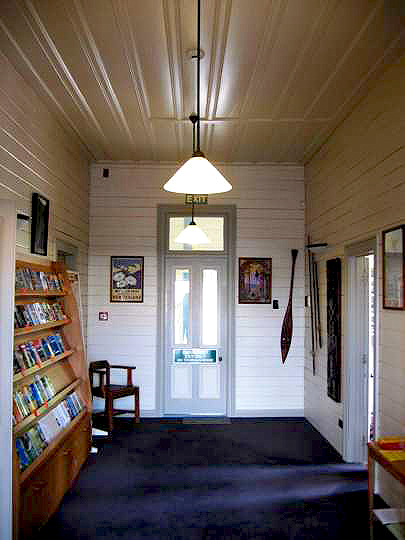During the late nineteenth and early twentieth centuries, the Hot Springs Domain at Te Aroha was the most popular geothermal resort in New Zealand. The Domain was initially established as a reserve in 1881, incorporating an area of 9.1 hectares (20 acres) on the lower slopes of Mount Te Aroha. The many hot springs in this area lay within the traditional territory of Ngati Rahiri, a hapu of Ngati Maru of Hauraki, and had long been frequented by Maori for their perceived healing qualities. By the late 1870s the site had become a popular destination for Pakeha visitors, with tourist numbers increasing after the discovery of gold on Mount Te Aroha in 1880 and the development of Te Aroha township as a mining settlement. The Domain was acquired by the government soon after the passing of the 1881 Thermal Springs District Act, with local Maori - who had played an instrumental role in initially promoting the resort - retaining the right of free access to the waters. The 1881 Act had been introduced to promote Crown ownership of New Zealand's thermal resources, partly in response to their increasing purchase and commercial exploitation by private entrepreneurs. The earliest permanent buildings in the Domain were erected soon after the reserve was brought under the Public Domains Act in 1882, and were overseen by the Te Aroha Hot Springs Board. By 1887, there were seven bath houses and a drinking fountain, with extensive grounds laid out to plans drawn up by Henry Crump, a local engineer and architect. Government money largely financed the development of the facilities, as well as the establishment of a railway from Auckland in 1886. As the centrepiece of the now-burgeoning town of Te Aroha, the spa became the first geothermal resort in the country to receive thousands of visitors on an annual basis. People came to bathe or ingest its waters for health reasons, but also to promenade, listen to music or play genteel forms of sport such as tennis, croquet and bowls. Spas had important associations in nineteenth-century European society as places where the well-to-do could relax and congregate in refined and beautiful surroundings. Although the health and leisure aspects of the reserve were heavily promoted when it was taken over by the Department of Tourism and Health Resorts in 1903, the facilities went into a slow decline after government funding and visitor attention were steadily drawn to Rotorua. The Domain nevertheless remained an extremely popular destination until after the First World War (1914-1918), and continued in a reduced capacity as a spa thereafter. Following closure of many of its facilities in the 1950s and 1960s, the Domain was transferred to the control of the local council (now Matamata-Piako District Council) in 1979, while formally remaining in Crown ownership. The former Domain Office was erected in 1894 as the first substantial building in the Domain not employed for bathing. It appears to have multiple uses from an early stage, incorporating a ticket office, library, general office and women's waiting room. Meetings of the Domain Board were also held on its premises until the Board's duties were fully handed over to the Tourist Department in 1903. The earliest deliberations of the Borough Council were similarly conducted in one of the rooms after this body was formed in 1898. Prior to its construction, many of these functions were held in separate buildings, both on and off the Domain site. The architect and builders of the new purpose-built structure are unknown, although £300 had been allocated for its construction and the creation of a cold swimming pool, located elsewhere in the reserve. The Domain Board created the library as a recreational facility for visitors to the spa and is said to have stocked the 'Chief Home and Colonial papers'. The women's waiting room is likely to have provided a safe and supervised environment for female visitors to await engagements. By 1900, the building was also used for providing medical advice, after James Muir had been appointed by the Domain Board to provide free consultations on 'the judicious use of the baths and drinking waters'. This association with health care was to last for nearly a hundred years. The office was extended in 1904-1905, soon after the transfer of the Domain's authority to the Department of Tourism in 1903. The additions were designed by an unknown architect in the Public Works Department and constructed by Messrs Mackie and Dudley at a total cost of just over £193. Extra facilities were provided for medical staff, following increased interest by the government in the science of Balneology and the promotion of health resorts. The library was also improved, with the Tourism Department making its facilities available to the townspeople. A small room at the rear of the building may have been created or modified to dispense tickets or towels for bathing. The Department used the remainder of the building as its administrative centre for the Domain, and as an office for the Government Tourist Agent. A decline in the stature of the building occurred in the late 1930s, when council meetings and the library were moved to municipal buildings in the town. The government Tourist Office, however, remained with attached rooms for medical consultation. A general surgery occupied the structure until 1995, when the last doctor retired. The building has since been extensively conserved by the Matamata-Piako District Council, and is currently employed as a Visitor's Centre once again.



Location
List Entry Information
Overview
Detailed List Entry
Status
Listed
List Entry Status
Historic Place Category 2
Access
Able to Visit
List Number
765
Date Entered
12th December 2003
Date of Effect
12th December 2003
City/District Council
Matamata-Piako District
Region
Waikato Region
Extent of List Entry
Registration includes the structure, its footings and the ground beneath its footprint. It includes all fixtures and finishes. It excludes the more recent bowling pavilion and associated toilet, which conjoin the Domain Office on its eastern side.
Legal description
Sec 16 Blk IX Aroha SD (Recreation Reserve NZ Gazette 1882 p.1860)
Related listings
Stay up to date with Heritage this month
